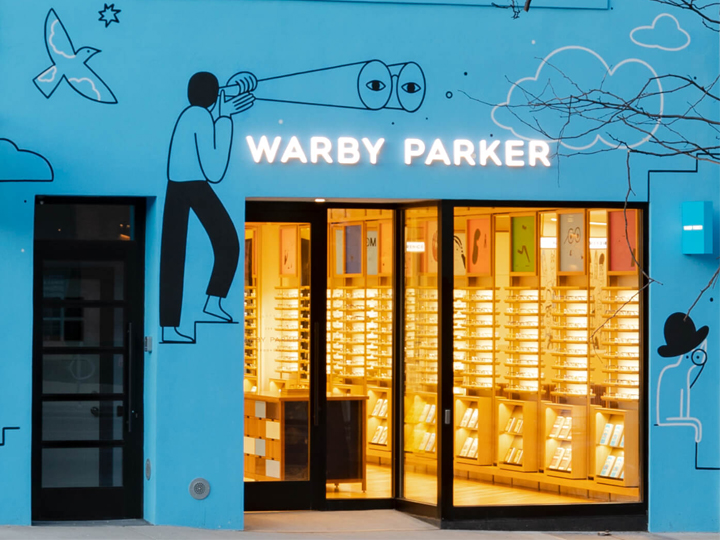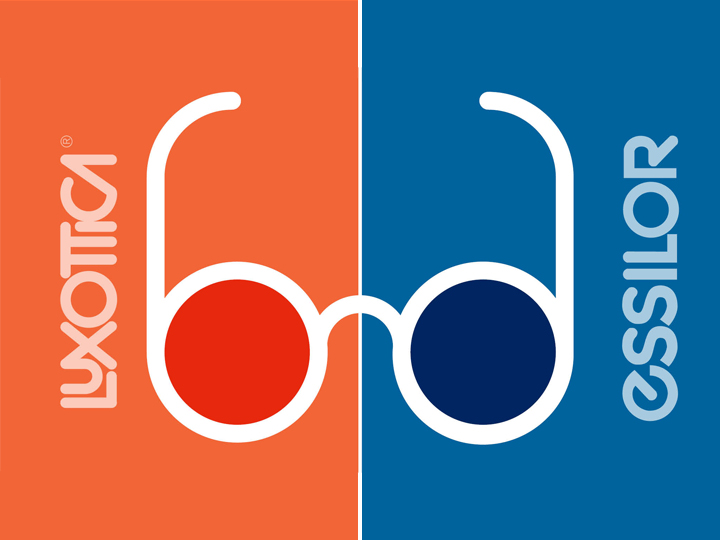NEW YORK–(BUSINESS WIRE)– Warby Parker Inc. (NYSE: WRBY) (the “Company”), a direct-to-consumer lifestyle brand focused on vision for all, today announced financial results for the fourth quarter and full year ended December 31, 2021.
“2021 was a milestone year for Warby Parker, and one filled with moments that reinforce our commitment to driving scale and creating impact,” said Co-Founder and Co-CEO Neil Blumenthal. “Despite the ongoing impacts of the pandemic, our 2021 performance reflects the strength of our brand, our unique value proposition, and the resilience of our highly engaged team as we continue to deliver long-term sustainable growth. As we turn the page to 2022, we’ve never been more energized by the possibilities in front of us.”
“We operate in a large and growing category and are emerging from the pandemic in a position of strength. During 2021, our business grew significantly, expanded profitability, and gained share,” added Co-Founder and Co-CEO Dave Gilboa. “From broadening our glasses, contacts, and exam offerings to opening 40 new stores and introducing first-to-market digital tools, this year we look forward to solving more problems, delighting more customers, and creating even more value and impact for our stakeholders.”
Fourth Quarter and Full Year 2021 Highlights
- Full year net revenue increased $147.1 million, or 37.4%, to $540.8 million compared to full year 2020 and increased 46.0% compared to full year 2019.
- Fourth quarter net revenue increased $20.1 million, or 17.8%, to $132.9 million compared to the fourth quarter of 2020 and increased 41.9% compared to the fourth quarter of 2019.
- Increased active customers 21.5% to 2.20 million year over year.
- Average revenue per customer increased 13.0% year over year to $246.
- Full year GAAP net loss of $144.3 million.
- Full year adjusted EBITDA of $24.9 million, with adjusted EBITDA margin improvement of 270 basis points year over year to 4.6%.
- Opened 35 new stores during the year, ending 2021 with 161 stores.
- Doubled full year revenue of our contact lens offering year over year.
- Maintained 80+ Net Promoter Score.
- Opened second in-house optical lab strengthening Warby Parker’s vertically integrated supply chain.
- Reached over 10 million pairs of glasses distributed through Warby Parker’s Buy a Pair, Give a Pair Program.
- Became the first public benefit corporation to go public through a direct listing.
Eyewear company Warby Parker is at an inflection point in its 12-year history.
The firm has been credited with being a leader in direct-to-consumer, a model where businesses cut out middlemen to sell via their own stores, and it has arguably been an inspiration to other companies such as luggage-maker Away and sneaker brand Allbirds.
Warby Parker made its name by selling glasses online and undercutting incumbents such as Ray-Ban maker EssilorLuxottica by offering frames with a starting price of $95 — including lenses.
Having debuted on the stock market via a direct listing on Sept. 29, and seeing its stock price soar that day, Warby Parker is now embarking on the next leg of its journey: it is shifting toward selling services as well as glasses, co-founder and CEO Dave Gilboa told CNBC in a phone interview.
“We’re at this kind of interesting transition where historically we’ve been a glasses company and eyeglasses brand and now, we’re transitioning to becoming a holistic vision care company,” Gilboa said. “Where, in addition to buying glasses from us … Now, an increasing number of our customers are also getting their eye exam and prescriptions from us,” he added.
Warby Parker’s customers spent an average of $218 each in 2020, up from $188 in 2018, and it expects growth to come from people who buy progressive — or multifocal — lenses, eye exams and contacts, per a 2021 investor presentation. The company said these “holistic vision customers” have the potential to spend $500 and up a year after their initial purchase, more than double the amount for a glasses-only shopper.
Physical outlets are another opportunity. Currently, Warby Parker has 160 locations in the U.S. and Canada, and Gilboa said it has the potential to increase that number to 900, though he said it will take a while to get there.
A big question, however, is whether it can take on EssilorLuxottica, the $85 billion French-Italian giant created in a 48-billior-euro merger in 2018. Warby Parker’s market cap is currently $3.37 billion, but some analysts think it can compete.
Warby Parker made revenue of $487 million in the 12 months to June 30, 2021, up 33% on the year prior, and while it was profitable on an EBITDA (earnings before interest, taxes, depreciation and amortization) basis over that period, making $27 million, it posted a net loss of $53.2 million.
EssilorLuxottica’s model is a multi-brand one: it manufacturers its own labels such as Ray-Ban and operates under license for some of the world’s largest luxury players including Chanel, Versace and Ralph Lauren. It produces around 80 million to 90 million pairs a year according to a company spokesperson in an email to CNBC, and it made 5.5 billion euros in revenue in the third quarter of 2021, selling in North America, EMEA and Asia.
The French-Italian company also runs Sunglass Hut and other stores that sell its eyewear, and owns vision insurance companies too, including EyeMed, leading to criticism by some that it is a monopoly. But for Rebecca Harwood-Lincoln, an eyewear industry consultant, operating in different aspects of the market is “a fabulous concept.”
“They very successfully bought out retail outlets, so the likes of Sunglass Hut, Lenscrafters, David Clulow … then they get automatic distribution of their products and they benefit from the margins,” she told CNBC by phone. Last year, the firm bought Dutch eyewear retail GrandVision in an $8.5 billion deal.
While Warby Parker sees growth coming from its domestic market, EssilorLuxottica identifies an aging Asian population and a growing number of people who need glasses — but don’t yet own them — in the likes of China and Latin America, as opportunities. Innovation-wise, the spokesperson said it is focused on Ray-Ban Stories — its smart glasses collaboration with Facebook — and Stellest, a lens that has the potential to slow the progression of short-sightedness in children.
Can Warby Parker compete? “We don’t spend a lot of time thinking about others in the space and, as a direct-to-consumer company, we get a lot of feedback [on] what’s working well,” Gilboa said. “We do expect to grow significantly faster than the overall industry over the years and decades to come … We don’t really think in terms of market share or kind of getting bigger than the others in the category,” he added.
Mark Mahaney, a senior managing director and analyst at Evercore, says while Warby Parker has a “decent” business model (the firm gives it a “hold” rating), gaining market share might not touch EssilorLuxottica. “How about this for fun? [Warby Parker] could triple their market share, and I’m not sure that Essilor would even notice.”
Post time: Mar-25-2022



